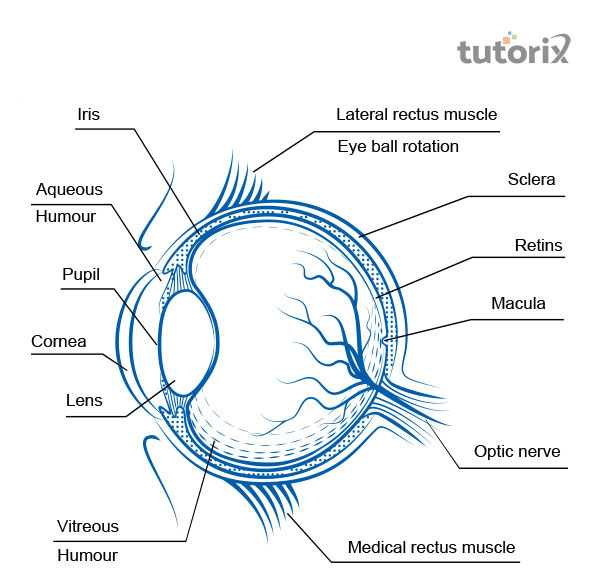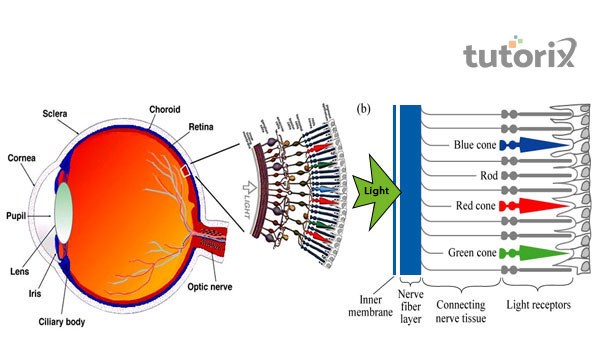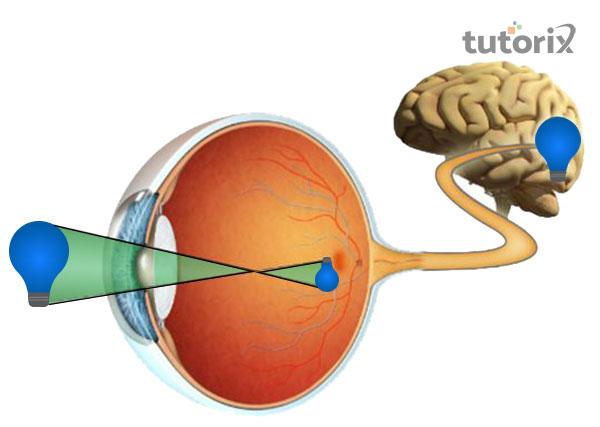Introduction
The eye is one of the 5 sensory organs apart from the nose, ear, tongue and skin. It enables the power to see every object that is around us. In simple words, it works like a camera that captures visions. Eyes also catch the light rays from our surroundings and make them convert in a way that makes the further process in the brain and make humans see any object near or far.
What is a human eye?
The human eye is an organ that can transform electromagnetic waves into images in a long and complex process. This organ helps humans to visualize every single object they see (gpoh, 2022). The optic nerve is the thing that transmits any signals to the brain and it takes the form of images and provides sights (Widomska, Gruszecki, & Subczynski, 2021).
Everything that the human sees, the eye gives the perception of light, defines the color and makes clear the depth of objects to it. It is called the most significant and as well as sophisticated human organ. It works with the help of a few important parts and the overall function of the eyes is fascinating enough to study further.

Figure 1: Human eye
Structure of human eye
The most interesting part of the human eye is its structure and parts. This sense organ is kind of similar to the camera and it works similarly too. However, the human eye is almost 2. 3 cm and is a spherical ball in shape that is filled with some fluids (owlcation, 2022).
There are six muscles in the human eye and they control the basic movements of the eye. There is lateral rectus, medial rectus, inferior oblique, or superior rectus muscles that can be found in the eyes (Widomska, Gruszecki, & Subczynski, 2021). There are seven most important parts of the human eyes that help people to see things
- ScleraThe outer covering of the eye is called Sclera. It is basically a protective white layer that covers most of the outside area of the eyeball (owlcation, 2022). It is the most protective wall for the eyes and it protects the eyes from any kind of injury.
- CorneaThe cornea is the transparent outer layer that is placed in front of the eye. It helps the eyes to focus on the lights, so the human can see things clearly (gpoh, 2022). For any kind of light to enter the eye, it has to pass through Cornea.
- IrisIris is a dark muscular tissue that is situated the behind of cornea. It has the structure of a ring and the colour of the eye depends completely on Iris (Gaspar et al. 2019). The amount and intensity of the light that enters the eye depend on the iris because it adjusts its size accordingly.
- PupilThe pupil is a small part of the iris that is like a small opening. The iris can control its size. The main function of the pupil is adjusting the amount of light that enters the eye.
- RetinaThe retina is made of a large amount of nerve cells and it is the most light-sensitive part of the human eye (sas, 2022). The only function of the retina is to convert any images that are formed by the lens into electric impulses and then they are transmitted to the brain through optical nerves..
- LensThe transparent portion that is situated behind the pupil is called a lens.
- Optic NervesTwo types of optic nerves are found in the eyes, cones and nodes.

Figure 2: Working of the human eye as a spectrometer
The function of the human eye
There are several important functions of the human eye. However, the most important is, that it is responsible for the vision and helps in the process of identifying colours and most importantly it maintains the biological clock of the human body (gpoh, 2022).
A sense organ is capable of visuals and through which produces the sights. It also receives direct oxygen with the help of aqueous humor.
Apart from nourishing every part of the eye, theaqueous humor removes waste materials that help to see things very clearly and also maintains the shape of the eye (sas, 2022).
Like the camera, the human eye also focuses and then lets the light makes visual images. There are two main things that the human eye is used apart from giving the sense of sight, it improves the brain’s focus as there are techniques that help the brain to perform better and also the storage of Information

Figure 3: Working of eye
Conclusion
The eye is one of the most important parts of the human body. The main organ helps us to see and get visual information. By receiving visual information, one can send it to the brain which helps to project the object. There are various cells presented in the human eye that allow us to understand the colour and other factors of an object.
Leave a Reply